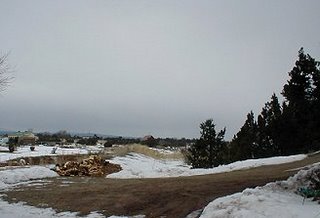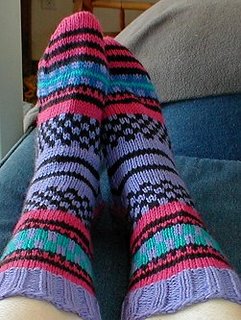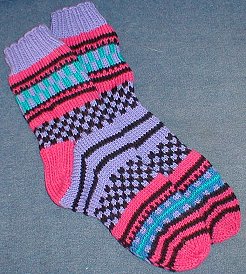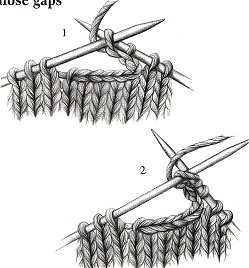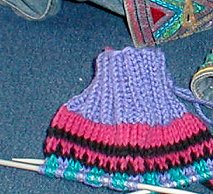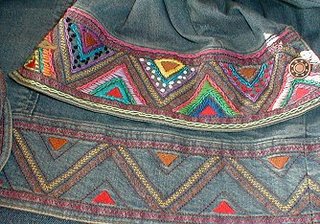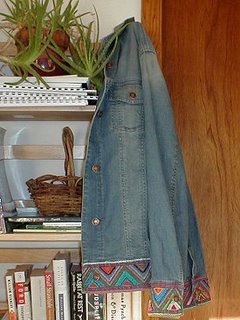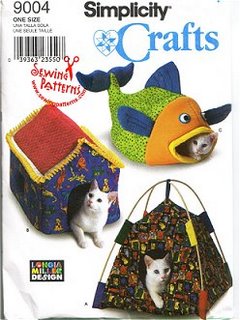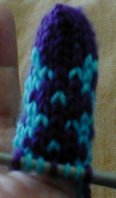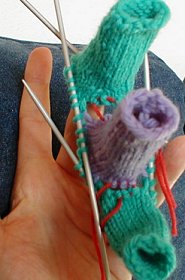
Once the pre-knit thumb is added to the knitting (about 2 inches from the base of the little finger), I did decreases to each edge of the original thumb stitches - SSK on the right side and K2TOG on the left - to form the thumb gusset.

This shows the kitchener stitch used to attach the stitches between each finger. This is one of those moments when you will be really glad to have shorter (5" or less) dpns.
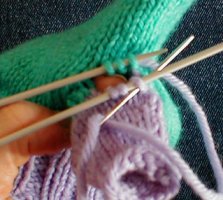
To omit the holes that were formed on each side of the kitchener stitched finger interiors, I flipped the glove and then threaded a needle with yarn. (I used a contrasting yarn for the photo but of course would use matching yarn for the actual glove.) I used the tapestry needle to go around the hole and grab all the backs of stitches that are perpendicular to the yarns moving around the hole. (I'll get a better photo for the booklet.) Pull tight and the hole will disappear.

For this glove I used an excellent reference article called "Knitting Gloves from the Top Down" by Dorothy T. Ratigan in the Fall 1996 issue of
Interweave Knits. She includes some good advice on how to measure your hands.
Meg Swansen has a pattern for top-down gloves using I-cord for the fingers in the book
Handknitting with Meg Swansen - there is also a video with this pattern at
Schoolhouse Press (scroll down).
Joyce Williams has a top down glove pattern in her beautiful book
Latvian Dreams. Her method apparently includes an unusual technique where no extra stitches are picked up between the glove fingers and is great for knitters who hate dealing with holes between the fingers. Has anyone used this method? I'm curious how limited the finger movement is on these gloves.
Anna Zilboorg's
Magnificent Mittens are all knit top-down and she includes a pattern for mittens with a separate index finger. Interestingly she admits they are fussier to make than she enjoys but "glove knitters, however, should find them no trouble".
One of the most fascinating glove patterns of all time is Beverly Royce's Tip-to-Cuff Two Needle Gloves in
Homespun Handknit. These gloves are knit tubular top-down on two needles using double knitting. Not only that, they are done in a stranded color knitting pattern! I plan to knit these gloves next.
Finally,
Nonaknits has a great free online pattern (scroll down) for top down gloves using I-cord fingers and the Joyce Williams in between the fingers method.


